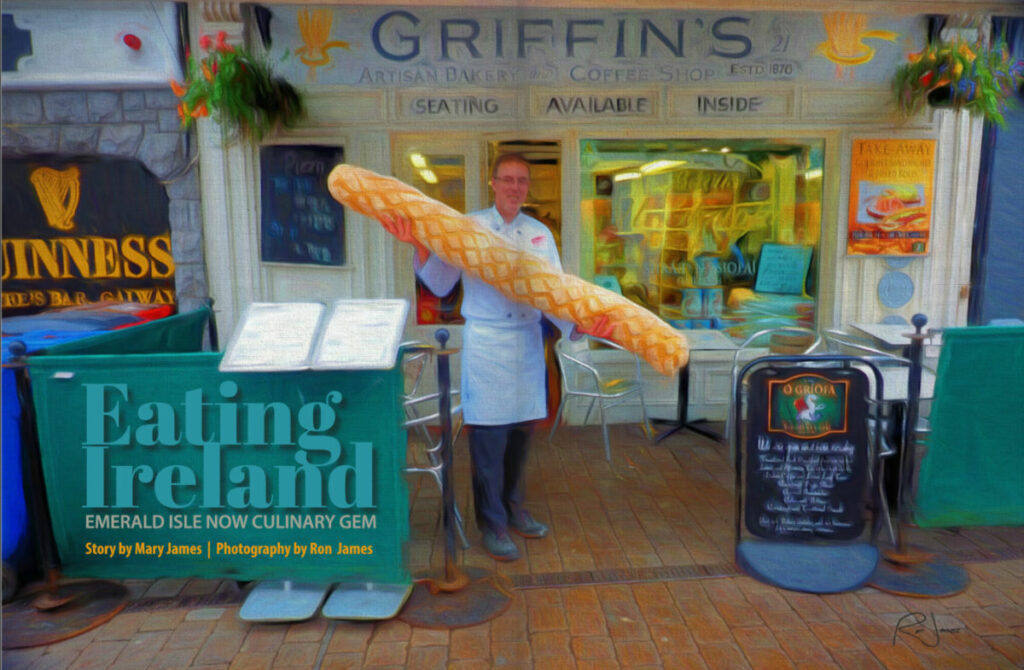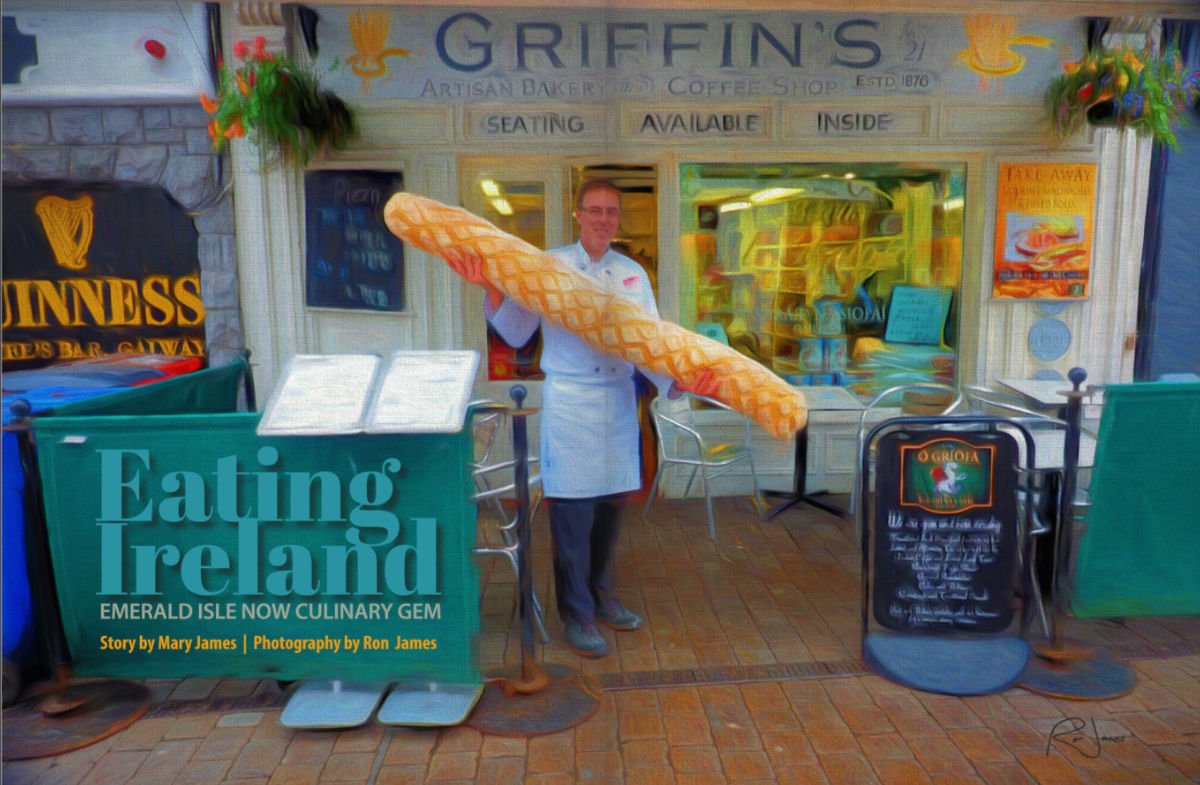BY RON AND MARY JAEMS
Ireland’s verdant countryside – where sheep and cows graze, and rustic farms hide behind hedgerows – is an Eden visitors find irresistible.
These days, so do the country’s chefs.
Innovative food pros are putting Ireland on the map as a culinary destination by drawing deeply on its homegrown bounty. In Michelin-starred restaurants, B&B dining rooms, rollicking pubs and cozy tea shops, Ireland today proudly dines off the abundant land and surrounding sea.
For Chef JP McMahon, “terroir” best explains this modern approach to food that earned a Michelin star for his Galway restaurant Aniar. “Terroir is the combination of factors, including soil and climate, that give a wine its distinctive character,” he explains. “In our restaurant, we use to word to describe our food that comes from this specific place, which is Galway and the west of Ireland, from our farms, the wild lands and shores that surround us.”
In his best-selling cookbook, “Irish Pantry,” acclaimed chef Noel McMeel of Northern Ireland’s Lough Erne Resort shares a similar culinary philosophy “with roots in my homeland’s ancient past with a modern twist: Find the very best locally grown seasonal ingredients. Support farms and grocers that respect the earth. Prepare meals that delight and excite the senses … Above all else, let the natural flavor of good food shine through.”
Those home-grown, homemade ingredients are “the envy of Europe,” notes Eveleen Coyle, founder of popular food tours in Dublin and Cork. While Ireland may not have the same strong tradition of cuisine as, say France or Spain, she adds, “We have terrific produce – grass-fed cattle all year, mountain lamb, dairy. As far back as 1130, the monks in St. Mary’s Abbey were grazing cattle on fields with wild garlic to get that flavor into their cheeses.”
Foodies will recognize familiar currents in Ireland’s culinary renaissance, including the emphasis on farm-to-table, seasonality, and organic ingredients. Menus change quarterly, weekly, and even nightly and dishes often showcase produce grown steps from restaurant kitchens. At the Lodge at Ashford Castle, for example, Chef Jonathan Keane harvests dinner salad makings from neat raised beds he tends in the Lodge’s four covered hoop houses.
McMahon, Keane, and others share influences from the Nordic food revolution spearheaded by Copenhagen’s René Redzepi and followers who rely only on local ingredients, some gleaned by the age-old practice of foraging. In McMahon’s kitchen, imported spices are banned, while Keane often plates with snips of flowers, berries, and herbs gathered around Ashford Castle’s forested acres.
McMeel also recognizes Myrtle Allen, the East Cork chef of the Michelin-starred restaurant Ballymaloe House, who championed the use and promotion of Irish foodstuffs for more than five decades. “She is where Irish food began,” lauded one observer when Allen died in 2018 at age 94.
McMeel agrees, praising Allen “as a forward-thinking pioneer” and mentor. “She not only dedicated her life to putting the emphasis back on sourcing locally, and practicing traditional arts in growing, cooking and storing food,” he writes, “she’s opened her house and heart to anyone who cared to learn what she has to teach.”
Like many things in this country, buffeted over the years by unrest and economic woes, Ireland’s culinary evolution faces an uphill climb. Farmland is shrinking and consumption of cheap fast food or take-out is skyrocketing. Globalism brings more dining options, not just familiar pizzas and burgers, but sushi and kebobs.
“I hope the next 10 years can be as fruitful as the last,” McMahon says. “Our most difficult job is to educate the public, to try to get the best food to the most people, to build support. That takes renewed passion and focus by everyone who works with food.”
We saw plenty of both during our recent trip to Ireland, which included port stops while on a Celebrity cruise and a week-long land trip as my husband searched for family roots. The new pride in Irish food glowed everywhere from a Dublin pub’s fresh fried fish and chips to the breakfast buffet in the chic Grand Central Hotel Belfast where a booklet of “breakfast stories” introduced its Northern Ireland purveyors of oats, honey, apples, and more.
Ahead are some culinary snapshots of the exciting dining that awaits visitors to the Emerald Isle, ranging from food tours in two lively cities to fine dining in countryside retreats. Warning: You’ll be very hungry for a trip to Ireland when you finish sharing these meals with us!
READ THE MAGAZINE STORY WITH PHOTOS

